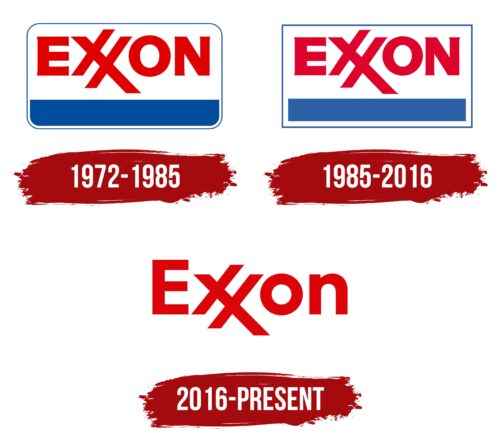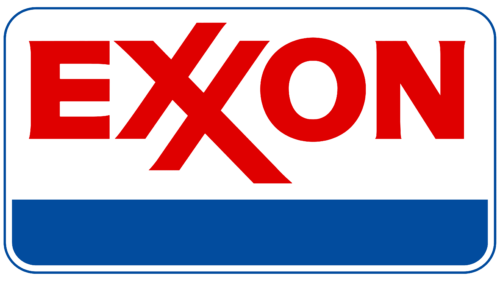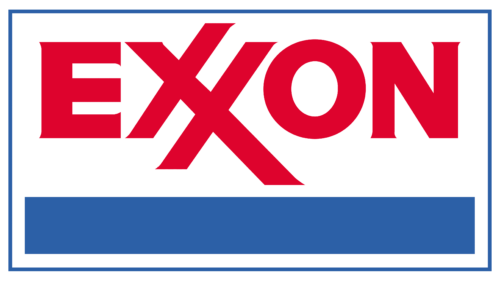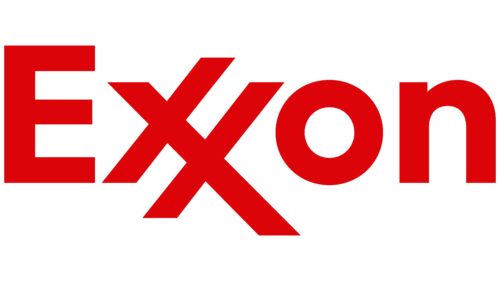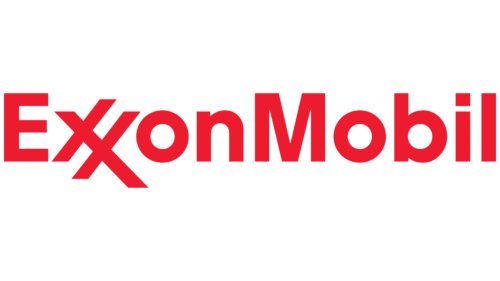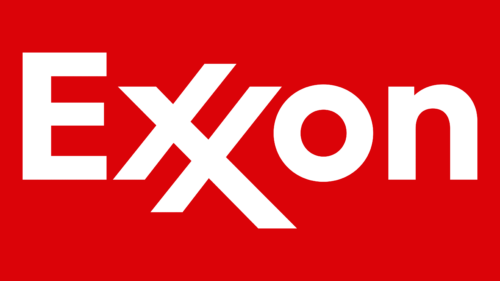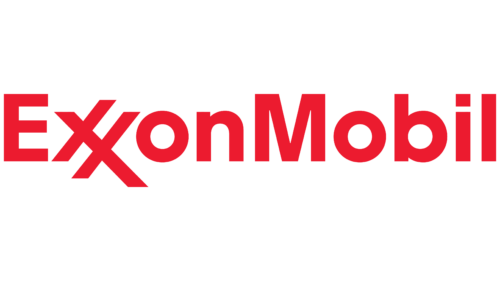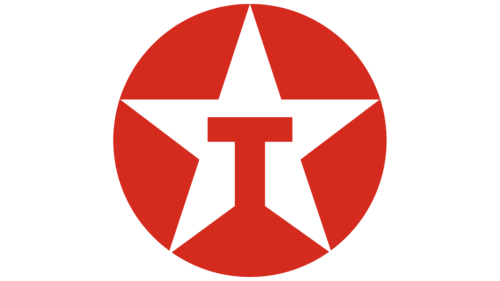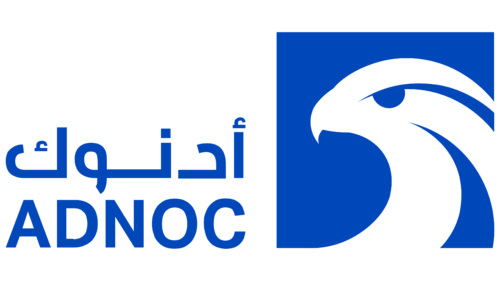The world-famous Exxon logo characterizes this company as a leader in the energy market. It has everything: hidden aggression, aspiration to dominance, and inner strength. The visual dynamics of the emblem perfectly convey the idea of fuel-powered vehicles.
Exxon: Brand overview
Exxon is the brand name of a gas station and the name of the world’s largest oil refinery. ExxonMobil has owned the brand since 1999, when the companies merged. The Exxon logo points to service stations with gas stations, repair shops, and car washes.
Standard Oil has been the name of the company since it was founded in 1870. In 1911, it split into Socony, Jersey Standard, and 32 other companies, and in 1972, Jersey Standard was renamed Exxon. It used this name to name all the gas stations that previously existed under the Esso, Enco, and Humble brands, allowing it to clean up its assets. In 1999, it merged with the former Socony to form ExxonMobil.
Meaning and History
Created by designer Raymond Loewy on behalf of the corporation, the brand’s logo was subsequently changed twice, but only slightly. In all variants, the master’s proposed twist in the form of a double X was retained.
What is Exxon?
The brand of the main successor of the major oil refinery Standard Oil. Today, it is a chain of gas stations in America headquartered in Texas.
1972 – 1985
The birth of the Exxon brand and its logo was a forced move for Jersey Standard. After acquiring the large Humble brand, it renamed its gas stations Esso and Enco. However, most states did not allow the Esso brand because the name was formed as a pronunciation of the letters S and O (an acronym for Standard Oil’s parent company). And Jersey was one of SO’s 34 successors.
As a result, it was necessary to constantly maneuver between brands. To unify, it was decided to rename the company Exxon Corporation and call all gas stations Exxon. A wordmark logo was proposed by brand designer Loewy. The main meaning was the similarity of the double X to the double S in the former name. This was supposed to help users make a quicker connection with the brands.
The word Exxon itself can be decomposed as “ex” (past), “x” or “on.” It turns out that Exxon stands for replacing the past.
At the same time, the logo retained similarities to previous emblems. Jersey Standard and its two brands were designed in red and blue: an oval shape, red lettering, and a blue border.
Exxon changed its shape to a rectangle with rounded corners. This signaled the brand’s expansion compared to its predecessors (it had long held top positions in the Fortune 500). The red lettering brought it closer to Esso and Enco.
The blue bar at the bottom shows the parent company’s foundation on which Exxon is building its future.
Unlike many other brands, history has preserved not only the master’s original sketch but all the variations he designed. The sketch shows that Lowy thought for a long time about exactly how to connect the two X’s in the drawing. He made them look like an S and a W. In the end, he settled on placing one of the letters above the other.
By being one above the other, the XX lettering created an elongated common element. It resembled the arrow on a fuel gauge that indicates that fuel is running low and it’s time to fill up. It was a great psychological move: looking at the logo reminded drivers to fill up the tank.
The design resembled a slanted letter H, which linked the logo to the Humble brand. This made the Exxon decipherment even more understandable. Some saw the composition as a Templar cross and an indication of the Freemasons. However, there is no exact evidence of the owner’s involvement with this order.
In general, the designer never revealed the secret of his choice and claimed that he used the double X to make everyone think about it.
1985 – 2016
The company expanded, opened several refineries, and, in 1985, acquired a 48% stake in Yemen’s Hunt Oil Company. The company is recognized as the second-largest industrial giant in the world. It owns 10% of the oil market.
The success was marked by rebranding. The main changes were in the shape of the logo, which, instead of rounded corners, became sharp, becoming a real rectangle. This was a sign of strength. The company no longer seeks to please anyone and does not “smooth corners.” It dictates its own rules since it is at the very top.
The blue stripe rose from the edge of the logo, showing the elevation of the brand. Instead of bright scarlet, the color of the lettering became closer to a solid crimson. In contrast to the enthusiasm and bright pulses of the first color, it symbolizes creativity, career growth, and professionalism.
The capital letters of the inscription reinforce the idea of leadership and excellence.
2016 – today
In 1999, Exxon merged with Mobil, and now the main company had several equally important brands. It was time to “bring the Exxon brand into the family.” The visual mark of ExxonMobil was the red lettering. To connect the two brands, they created fully overlapping logos.
The Exxon icon was stripped of all additional attributes. Red letters with a distinctive double X appeared. In the upper case, only the capital letter emphasized that Exxon was just one of the company’s brands.
Font and Colors
The colors of the logo are quite patriotic. Red, blue, and white are the primary colors of the American flag. They show that Exxon operates throughout the United States. The first Standard Oil firm had 40 corporations across the country and controlled 95% of the oil industry.
The last visual sign is monochrome. The red color symbolizes dominance, active development, first-class service, and love for their business.
The font is unique. It is created based on Cocogoose Pro Text Bold.
Exxon color codes
| Pigment Red | Hex color: | #ed1b2d |
|---|---|---|
| RGB: | 237 27 45 | |
| CMYK: | 0 89 81 7 | |
| Pantone: | PMS Bright Red C |

